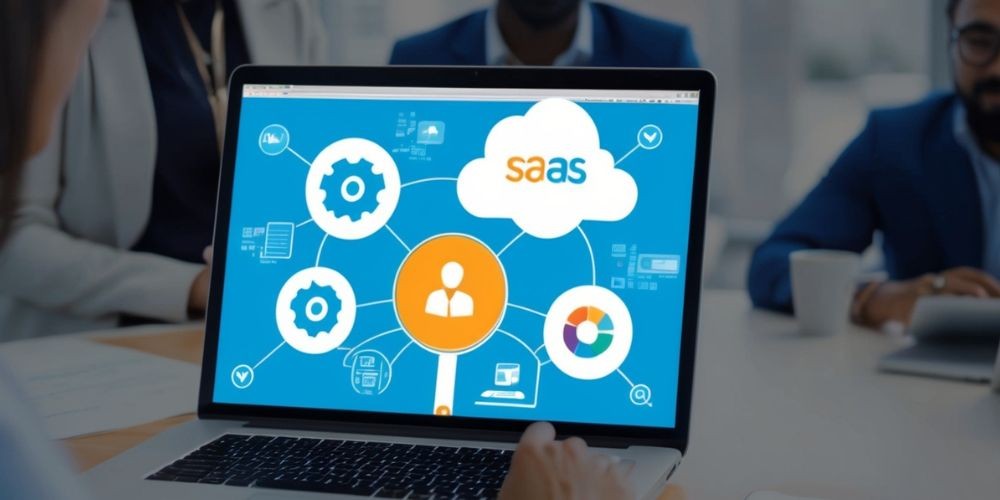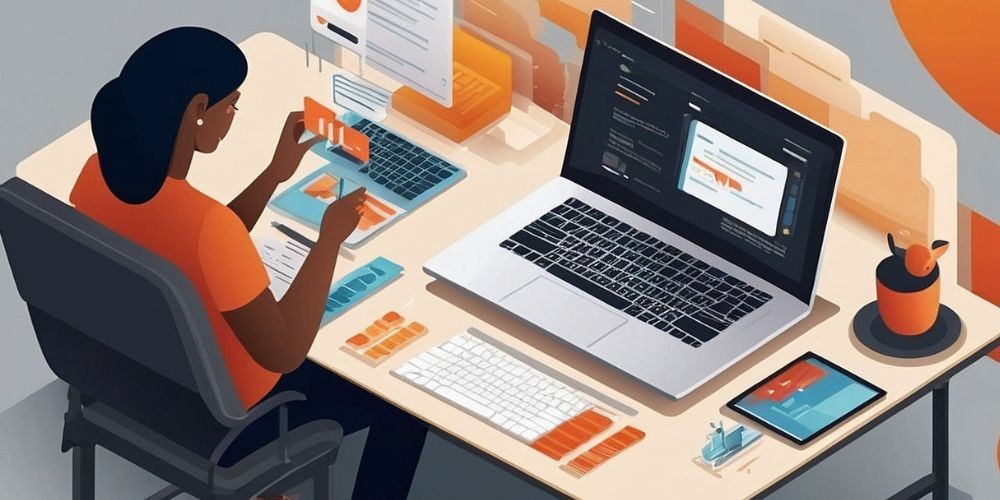Decoding SaaS vs. Traditional Software: Key Differences and Business Impacts
- Jul 27, 2024
- 991

The rise of cloud-based services has revolutionized the way businesses operate, providing unprecedented access to a plethora of tools and platforms. Among these, Software as a Service (SaaS) stands out as a transformative solution, contrasting sharply with traditional software applications. For businesses to make informed software investments, it is essential to grasp the differences between SaaS platforms and conventional software models. This article delves into these distinctions, focusing on cost structures, customization and integration, security and privacy concerns, maintenance and updates, and scalability and flexibility.
Cost Structures: Subscription vs. One-Time Purchase

One of the foremost differences between SaaS platforms and traditional software lies in their cost structures. SaaS platforms generally follow a subscription model, requiring users to pay a recurring fee on a monthly or annual basis. This model provides consistent cost predictability, making it easier for businesses to manage their budgets. Additionally, the subscription fee often includes regular updates and new features, eliminating the need for additional expenditures on upgrades.
In contrast, traditional software usually requires a one-time purchase of a license, which can result in a significant initial investment. While this may seem more cost-effective in the long run, it may also come with hidden costs, such as the need for periodic software upgrades and potential hardware requirements. For smaller enterprises or individual users, this initial financial burden can be a substantial barrier.
Furthermore, SaaS platforms provide the flexibility to scale up or down as needed, whereas traditional software typically necessitates purchasing additional licenses or hardware to support growth. Understanding these cost nuances is crucial for organizations to choose the software solution that aligns best with their financial strategies and operational needs.
Customization and Integration: Tailoring to Your Needs
The ability to customize and integrate software with other tools is another critical aspect that sets SaaS platforms apart from traditional applications. SaaS platforms are built with a high level of customization, enabling users to adapt the software to their precise needs. This is often facilitated through intuitive user interfaces that enable modifications in workflows, appearance, automation of processes, and incorporation of additional features.

Alongside customization, SaaS platforms excel in integration capabilities, easily connecting with other cloud-based or web-based applications. This seamless integration is typically achieved using application programming interfaces (APIs) or other methods, allowing users to streamline their digital workflows. For instance, a SaaS-based customer relationship management (CRM) system can effortlessly integrate with marketing, sales, and communication software, providing businesses with a unified view of customer interactions and data.
Traditional software, on the other hand, may not offer the same level of customization and often requires more complicated integration processes. These applications might need additional software or middleware to facilitate connectivity with other systems, which can be both time-consuming and costly. The combination of easier customization and integration makes SaaS platforms an attractive choice for many organizations looking to optimize their operational efficiency.
Security and Privacy: Managed vs. User-Dependent
Security and privacy are paramount concerns for any software solution. SaaS platforms typically offer robust security measures managed by the service provider. These platforms utilize sophisticated tools like encryption, intrusion detection systems, and constant monitoring to defend against cyber threats. The responsibility for maintaining these security measures falls on the SaaS provider, ensuring that users benefit from high-level security without bearing the burden themselves.

However, relying on a SaaS provider also means entrusting them with sensitive data. Users must rely on the provider’s commitment to data privacy and protection, potentially raising concerns about data breaches and unauthorized access. Therefore, when choosing a SaaS platform, it is crucial to assess the provider’s security protocols and compliance with industry standards.
In contrast, traditional software applications place the onus of security and privacy squarely on the user or the organization. Users must implement their own security measures, such as firewalls, antivirus software, and consistent updates. While this offers more control over data security, it also requires significant resources and expertise to manage effectively. Organizations must weigh the trade-offs between managed security in SaaS versus the self-managed approach of traditional software.
Maintenance and Updates: Automated Convenience
Maintenance and updates are simpler with SaaS platforms, as these tasks are centrally managed by the service provider. Users benefit from automatic and centralized updates, ensuring that they always have access to the latest features and security patches without needing to exert manual effort. This ease of maintenance can be particularly advantageous for businesses with limited IT resources, as it reduces the need for dedicated support staff.

In contrast, traditional software often requires users or their IT departments to handle maintenance and updates. This can involve manual processes, leading to potential delays and inconsistencies in the availability of new features and security improvements. The associated costs of managing these updates, along with possible downtime during installation, can be significant for organizations.
Overall, SaaS platforms’ automatic updates and reduced maintenance requirements provide a more streamlined and cost-effective experience compared to traditional software. This convenience enables businesses to concentrate on their core operations without getting burdened by software management tasks.
Scalability and Flexibility: Growing with Your Needs
The ability to scale and adapt software to evolving business needs is a critical consideration for any organization. SaaS platforms excel in scalability and flexibility, allowing businesses to easily adjust their usage based on demand. Users can add or remove licenses, increase data storage, or access additional features with minimal effort, making it simple to align the software with their changing requirements.

Furthermore, SaaS platforms provide the convenience of access from any internet-connected device, eliminating the need for installations. This flexibility permits employees to work from any location, boosting productivity and collaboration in today's increasingly remote work environments. Moreover, SaaS platforms are consistently updated, offering users the latest features and enhancements without requiring manual efforts.
Traditional software, on the other hand, can be more challenging to scale. Expanding usage often involves purchasing more licenses or even investing in additional hardware, which can be time-consuming and costly. The need for software installations on each device also limits accessibility and can hinder seamless transitions between devices.
In summary, SaaS platforms provide exceptional scalability and flexibility, making them the perfect option for businesses aiming to remain agile and responsive in a constantly evolving digital environment. These attributes ensure that SaaS can accommodate growth and adapt to changing needs without imposing significant disruptions or additional costs.
Final Thoughts: Evaluating the Best Fit for Your Business
As businesses navigate an ever-evolving technological landscape, understanding the distinctions between SaaS platforms and traditional software models is crucial. Every approach offers distinct benefits and difficulties, so it's crucial for organizations to thoroughly assess their individual needs and operational demands.

SaaS platforms offer cost predictability, customization, seamless integration, robust security, automated maintenance, and exceptional scalability. These attributes make them particularly appealing for businesses seeking flexibility and continuous access to the latest features and improvements. However, the reliance on cloud-based solutions also necessitates careful consideration of data privacy and the trust placed in service providers.
Conversely, traditional software provides stability, control over data security, and a one-time investment cost structure. While these applications may require more significant initial investments and manual updates, they offer users the ability to manage their own security measures and tailor their usage without depending on external providers.
Ultimately, the decision between SaaS and traditional software will depend on various factors, including budget constraints, operational needs, data security requirements, and the ability to adapt to changing business demands. By carefully evaluating these factors, companies can make informed business decisions that are in line with their long-term objectives, ensuring that technology is effectively utilized to achieve strategic goals.